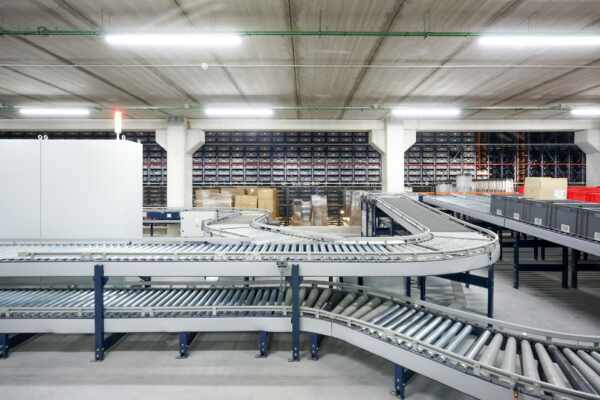In the world of conveyor systems, maintaining the cleanliness and functionality of conveyor belts is not just a matter of efficiency; it’s crucial for the longevity and reliability of the equipment. Conveyor belts, depending on their material and the industries they are used in, require specific cleaning methods to remove dirt, debris, and residues effectively without causing damage. As industry leaders, we understand the intricacies involved in the proper maintenance of different types of conveyor belts.
Cleaning strategies differ significantly between materials such as rubber, stainless steel, and those used in food manufacturing. Each type demands a tailored approach to ensure that the belt not only remains clean but also retains its integrity and operational capabilities. Implementing the correct cleaning procedures not only enhances the belt’s performance but also plays a vital role in preventing premature wear and tear, which can lead to costly downtime and repairs.
In our commitment to supporting optimal conveyor belt function, we prioritize advanced and appropriate cleaning techniques that cater to the specific needs of each belt type. Our approach ensures that all conveyor belts continue to operate at peak efficiency, supporting the diverse operational demands of industries that rely on these essential systems.
Overview of Cleaning Methods for Different Conveyor Belt Materials
In the bustling world of conveyor operations, belt materials vary widely from rubber to stainless steel to special composites used specifically in the food industry. Each material presents unique cleaning challenges and requires specific methodologies to preserve its functionality and longevity. For fabric or rubber belts, low-pressure washes combined with mild detergents are often sufficient to remove accumulated debris without damaging the belt surface. On the other hand, metal belts, such as those made from stainless steel, can withstand higher-pressure washes and can be cleaned using slightly more abrasive solutions to tackle tough residues like oils and greases.
Furthermore, when we consider composite materials, often found in food manufacturing environments, the approach shifts towards ensuring not just cleanliness but also sanitation and food safety. Here, the use of food-grade sanitizers becomes crucial. These sanitizing solutions must effectively eliminate contaminants without leaving residues that could compromise food product safety. Achieving this balance is key to our protocol, ensuring we address both the operational and compliance aspects of conveyor belt maintenance.
Step-by-Step Cleaning Guide for Rubber Conveyor Belts
When it comes to cleaning rubber conveyor belts, the process must be thorough yet gentle, preventing damage to the belt surface while ensuring comprehensive dirt removal. We start by removing loose dirt and particles using a soft-bristled brush; this initial step helps prevent scratching the belt during wet cleaning phases. After brushing, we apply a mild detergent solution, which is effective yet gentle on the rubber, using a cloth or soft sponge to wipe down the belt carefully.
Following the detergent application, the next critical step is rinsing. We use clean water to remove any soap residues, as these can attract more dirt if left on the surface. The rinsing should be thorough, ensuring the removal of all cleaning solution traces. After the belt is rinsed, we dry it using air blowers or absorption cloths to remove moisture that could lead to mildew or degrade the rubber. This step-by-step approach not only cleans the belt effectively but also extends its operational life by preventing common issues related to moisture and detergent buildup.
Tips and Tricks for Maintaining Stainless Steel Conveyor Belts
Maintaining stainless steel conveyor belts involves more than just routine cleaning; it requires specific techniques to ensure they remain in optimal condition for peak performance. The inherent durability of stainless steel does offer a distinct advantage in handling harsh environments and high temperatures, which are commonly found in various industrial applications. However, to maintain these robust properties, regular maintenance is essential.
We begin with frequent inspections to identify any early signs of wear or damage that could escalate into more significant issues. Minor scratches or kinks in the belt, if not addressed promptly, can lead to cracks or breaks over time. For everyday cleaning, we recommend using specific solutions formulated for stainless steel. These solutions help in removing tough stains and residues without corroding the surface. After applying the cleaning agent, rinsing the belt thoroughly with water prevents build-up of cleaning chemicals, which could potentially damage the belt in the long run.
Special Considerations for Cleaning Conveyor Belts in Food Manufacturing
When it comes to conveyor belts in food manufacturing settings, cleanliness and hygiene are paramount—not only for the longevity of the conveyor belts but also to meet stringent health and safety regulations. Here, the cleaning process must go beyond just removing visible debris and stains; it must ensure complete sanitation. To achieve this level of cleanliness, we use only food-safe cleaning agents that eliminate pathogens without leaving harmful residues.
Besides chemical cleaners, the physical cleaning process includes the use of sanitizing steam washes or UV light treatments, which are highly effective in disinfecting without the need for harsh chemicals. Moreover, we advocate for a schedule that includes both regular cleaning after each use and deep cleans periodically. This approach not only helps in maintaining the highest health standards but also in extending the belt’s life by preventing the accumulation of substances that could degrade the material over time.
Conclusion
Change Parts Pty Ltd, keeping conveyor belts across various industries in prime condition is part of our commitment to operational excellence. Our expertise stretches across helping industries implement sustainable and effective cleaning and maintenance regimes for their conveyor belts, ensuring they always perform at their best. If you need assistance or advice on the best maintenance practices for your conveyor belt system, don’t hesitate to reach out to us. Let’s keep your operations running smoothly and efficiently.




